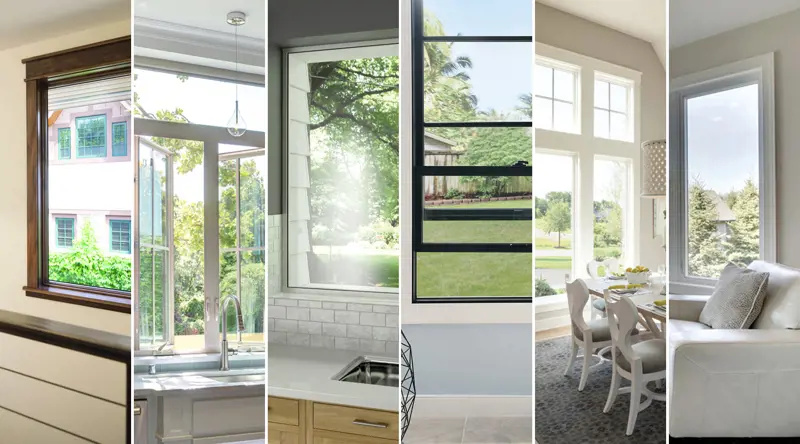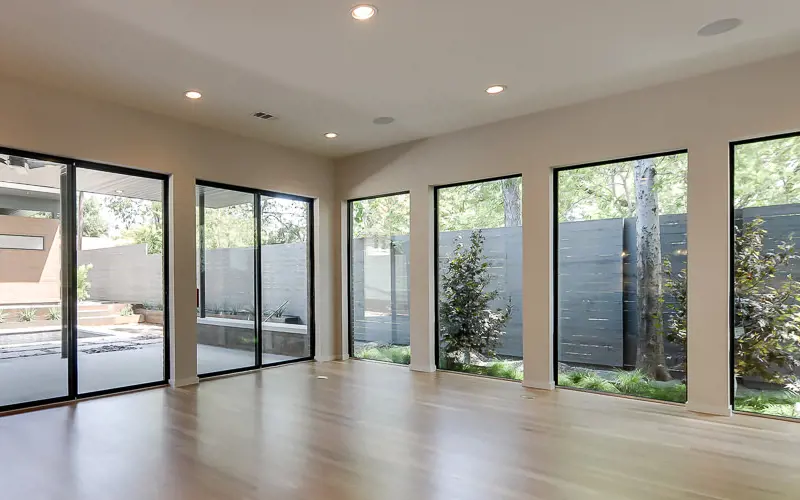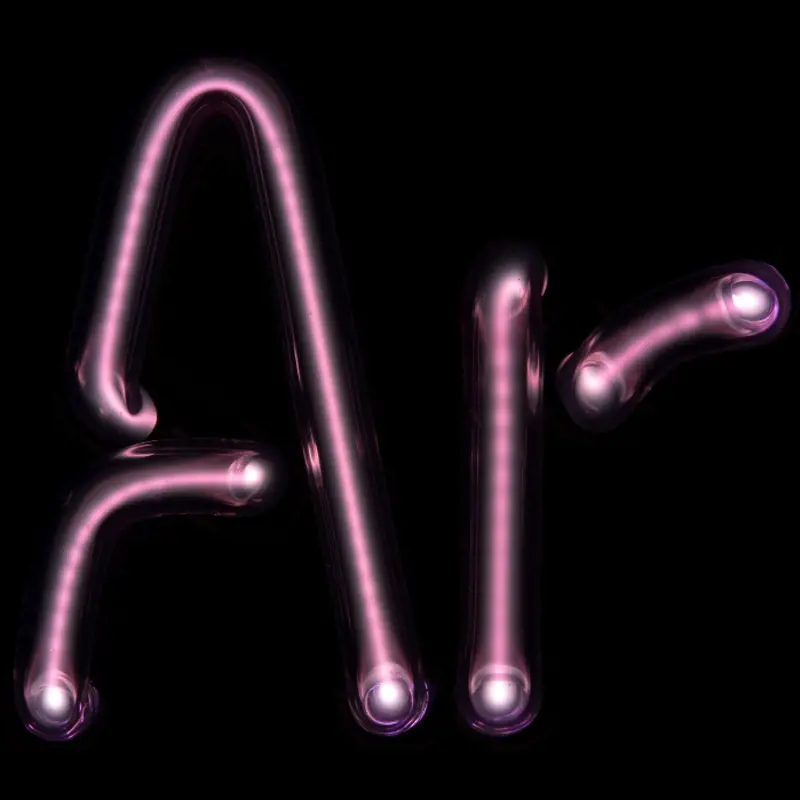
What Makes A Window Energy Efficient?
Each window in your home is an opportunity to bring in more light and ventilation. A window is essentially a barrier between the interior of your home and the outside elements (air, water, insects, etc.). They are also just one of the many components that make it possible to keep your home at a consistent temperature every day.
Windows, doors, roofs, and walls are all components of the building envelope. The building envelope is a house’s exterior shell. The envelope is responsible for repelling outside elements and maintaining the structural integrity of a structure as well as providing moisture control and temperature control.
Energy-efficient windows are an important factor in securing a tight envelope. A tight building envelope gives occupants more control over indoor air quality, temperature, humidity levels, and energy consumption. So what makes a window energy efficient?
There are 5 elements that make a window energy efficient
The perfect recipe for energy efficient windows includes 5 elements plus a proper installation.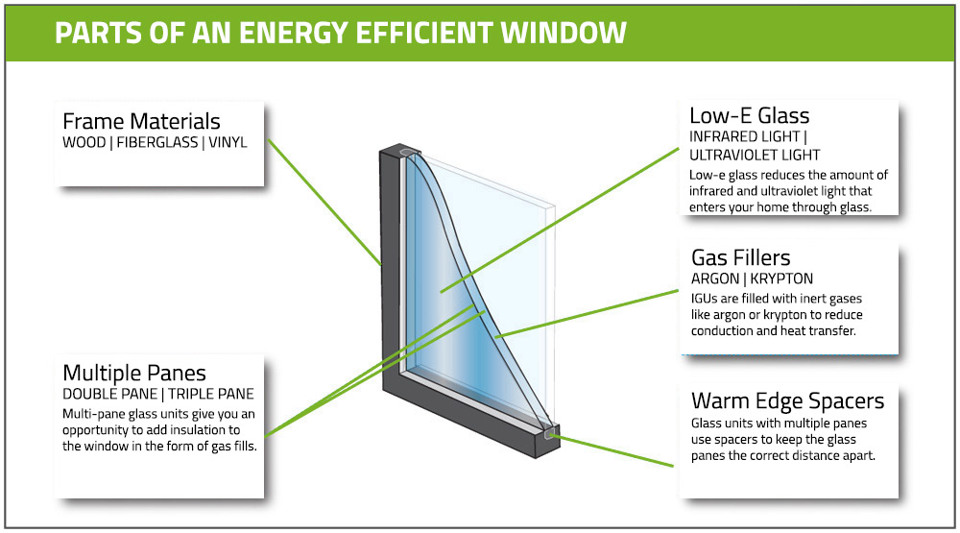
Frame Materials
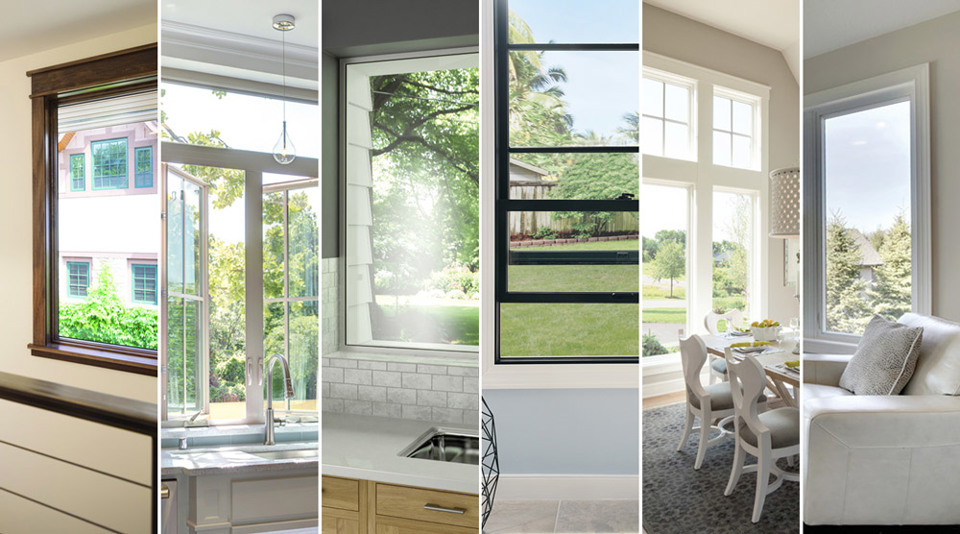
Quality frame materials should be durable, low-maintenance, and have a low thermal transfer. The most energy efficient window frames are non-metal frames like wood, fiberglass, or vinyl. Although wood has the lowest thermal transfer value it requires a lot of maintenance, even those with cladding require some maintenance. The most energy efficient and the easiest to care for windows are going to have fiberglass or vinyl frames and sashes.
Multiple Pane
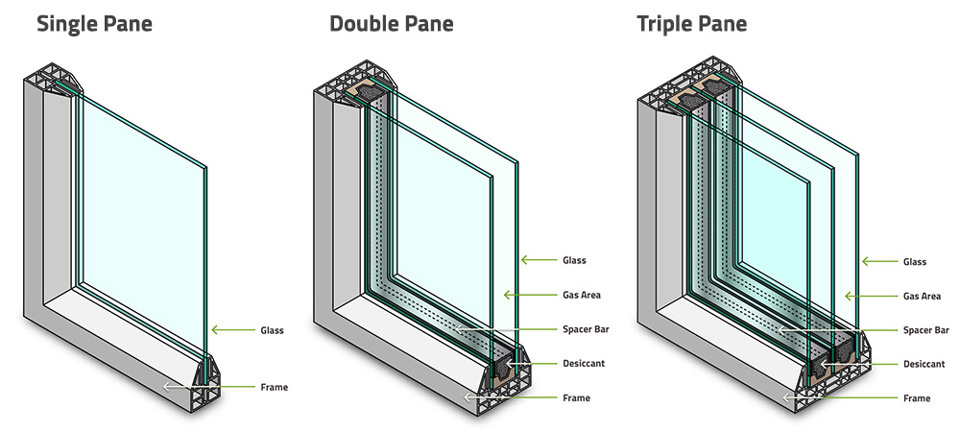
Multi-pane windows are a more energy efficient option than single pane windows. Multiple panes of glass are used in insulated glass units (IGUs). Unlike single pane windows, multi-pane units have space between panels of glass that can be filled with inert gasses to provide a barrier against heat flow.
Double pane windows have become the standard in window units but you can also choose windows with triple pane glass packages.
Low-E Glass
Low-E stands for low emissivity. When heat or light hits the glass in a window, two things can happen. The first is the heat or light energy can be convected away by moving air. The second is that the heat or energy can be reradiated by the glass surface which means the energy is further absorbed through the glass.
According to the Efficient Windows Collaborative (EWC), 84% of long-wave radiation that strikes a clear glass surface is absorbed by the glass and only 16% is reflected. Compare to a glass with low-e coatings, only 4% is absorbed and 96% is reflected.
Low-e coatings reduce the amount of infrared and ultraviolet light that enters your home through glass without minimizing the amount of light that enters your home.
Gas Fills
Gas fills improve the thermal performance of windows by reducing the conductance of the air space between multiple layers of glass. Without gas fillers, air currents between the glass carry heat to the top of the sealed glass unit and colder air settles at the bottom.
Inert gas like argon or krypton fill the space and minimize the convection currents thereby reducing conduction through the gas as well as overall heat transfer between the interior temperatures and exterior temperatures.
EWC notes that the optimal spacing is about ½” between panes being filled with argon gas and ¼” between panes using a krypton gas filler.
Warm Edge Spacers
Spacers are used to separate multiple panes of glass in a window unit. Spacers also accommodate the stress of thermal expansion and contraction and provide a moisture barrier to prevent water passage or fog in the glass unit. Additionally, spacers also provide a gas-tight seal to prevent the loss of gas fills. Warm edge spacers are those specifically designed to improve thermal performance.
On their own, each of these elements doesn’t mean much but together they can make a high performing unit. With custom windows, you have the option to build windows that will meet or exceed your local energy codes.
Of course, the quality of installation and overall quality of the window also impact how the window will perform in regard to energy efficiency. As you take on your project you'll want to check the reviews and history of the company you choose to work with. A trustworthy company can provide additional guidance and expert installation.
If you live in North Texas and you're looking for a company to help you with your window replacement project, consider giving us a call at 817-860-9767 to schedule a pressure-free in-home consultation.
Oops!
We don't currently serve your area but do want to help you plan your project. Try our Build & Price tool to get an idea of window & door costs within DFW. Your area may be higher or lower but at least you'll have some idea of the price.
Thanks for stopping by.




